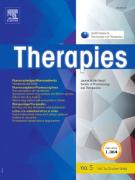Association between venous thromboembolism events and fibrates: A comparative study - 06/06/19
 , Xavier Humbert a, c, d, 1, Murielle Faucon e, Claire Tournilhac c, Marion Sassier a, Sophie Fedrizzi a, d, Paul Milliez b, d, Véronique Lelong-Boulouard a, Antoine Coquerel a, Paolo Emilio Puddu d, f, Jean-Jacques Parienti g, Joachim Alexandre a, d
, Xavier Humbert a, c, d, 1, Murielle Faucon e, Claire Tournilhac c, Marion Sassier a, Sophie Fedrizzi a, d, Paul Milliez b, d, Véronique Lelong-Boulouard a, Antoine Coquerel a, Paolo Emilio Puddu d, f, Jean-Jacques Parienti g, Joachim Alexandre a, d| pages | 10 |
| Iconographies | 3 |
| Vidéos | 0 |
| Autres | 0 |
Summary |
Aim |
Previous studies highlighted a significant association between fibrates and venous thromboembolism (VTE) events in dyslipidemia diabetic patients. Studies in non-diabetic patients are divergent. The present study investigated the association between VTE events and fibrates in diabetic and non-diabetic patients.
Methods |
Two approaches were used: (1) a disproportionality analysis using the World health organization pharmacovigilance database VigiBase® was used to evaluate the reporting odds-ratio (ROR) of fibrates for VTE events. Clinical and demographic characterizations of patients with fibrates-related VTE reports are described; (2) a case control-study was performed using the Caen university hospital medical information database between January 2008 and December 2012. Cases were dyslipidemia patients who were hospitalized for VTE without an evident provoking factor. Up to four controls per case were selected in dyslipidemia patients hospitalized for a non-VTE event. Controls were matched to cases by age, gender, date of hospitalization, diabetes, chronic kidney disease and hospitalization department. A multivariate conditional logistic regression was performed.
Results |
Disproportionality analysis: a total of 946 notifications were identified in VigiBase® (32.9% of diabetic patients). Fibrates were significantly associated with an increased report of VTE (ROR 1.14, CI 1.07–1.22). Case-control study: a total of 163 cases (21.5% of diabetic patients) and 514 matched controls were recruited. Fibrates were significantly associated with a higher risk of VTE events that required hospitalization in multivariate analysis (odds-ratio (OR) 3.67, CI 1.82–7.37, P=0.0003). The association was only significant for fenofibrate in both approaches.
Conclusion |
Fenofibrate was associated with a higher incidence of VTE events in diabetic and non-diabetic patients.
Le texte complet de cet article est disponible en PDF.Keywords : Disproportionality analysis, Fibrates, Matched case-control study, Pharmacoepidemiology, Pharmacovigilance, Venous thromboembolism
Plan
Vol 74 - N° 3
P. 421-430 - juin 2019 Retour au numéroBienvenue sur EM-consulte, la référence des professionnels de santé.
L’accès au texte intégral de cet article nécessite un abonnement.
Bienvenue sur EM-consulte, la référence des professionnels de santé.
L’achat d’article à l’unité est indisponible à l’heure actuelle.
Déjà abonné à cette revue ?

